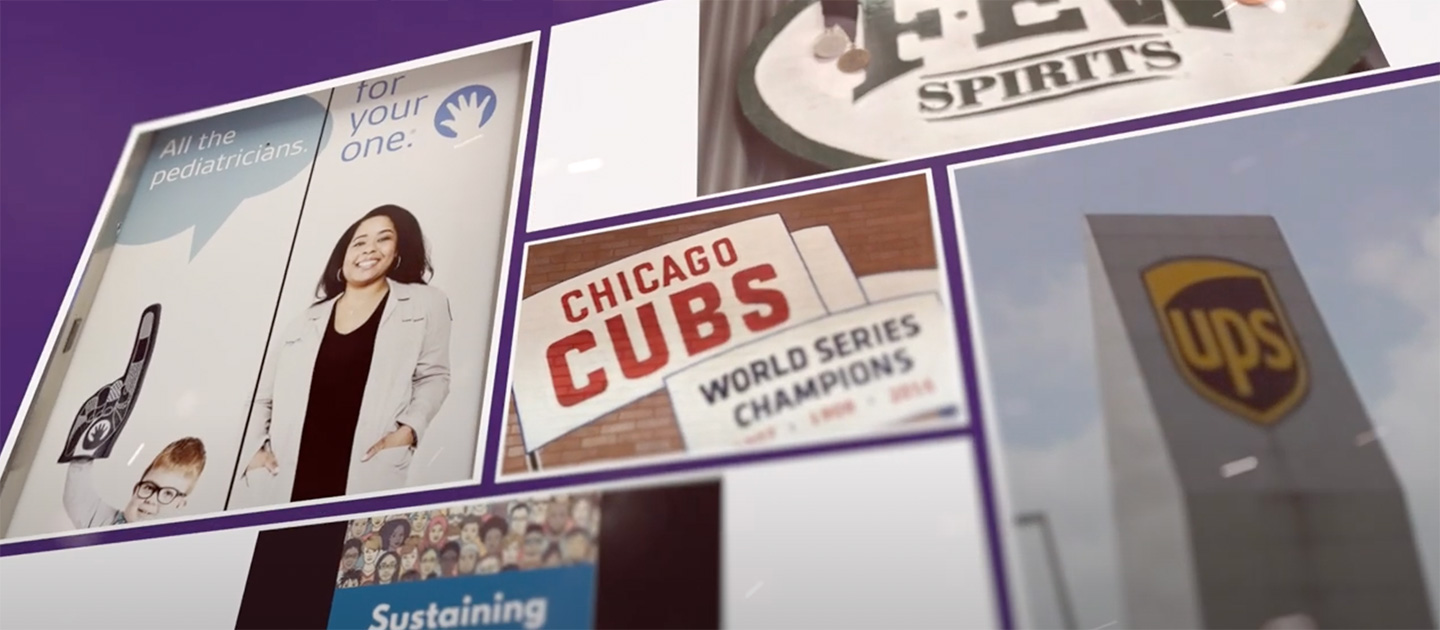 Undergraduate
UndergraduateIndustrial Engineering Students Create Practical Solutions to Industry Challenges
Teams presented their ideas at the culmination of the Client Project Challenge course

A crucial part of the curriculum for undergraduates in Northwestern Engineering’s Department of Industrial Engineering and Management Sciences (IEMS) is working with external clients. Instead of simply prepping for exams, IEMS 394: Client Project Challenge allows IEMS students to apply their knowledge to help solve current issues that companies and nonprofits face.

During a June event held at the Ford Motor Company Engineering Design Center, 12 student teams presented their work to an audience of IEMS faculty and their industry partner representatives. Following their presentations, the teams fielded questions from IEMS chair David Morton and director of undergraduate studies Professor Jill Wilson.
“This course was an effective synthesis of our key industrial engineering sequence courses,” Emily Hull said. “More importantly, it helped us develop critical client-facing skills. Through this course we had a chance to apply these skills in an innovative and creative way to solve a unique real-world problem. We developed communication skills and gained valuable experience in building weekly updates and responding to client feedback."
Three of the projects are highlighted below.
Balancing high schools
Hull and teammates Aavi Deora, Matthew Holleran-Meyer, and David Meza paired with school officials in Portland, Maine, to better balance the diversity and class size within the city’s two high schools.
Portland High School (PHS) has grown larger than Deering High School (DHS), while also maintaining a lower percentage of Black, Indigenous, and people of color (BIPOC) students. The issue stems from Portland’s current enrollment system, which allows graduating eighth graders to rank their high school choices and guarantees they will receive their top choice unless they are applying to a specialized school. Over the past two years, this system has led to increasingly disparate schools in terms of racial diversity and class size. Portland’s student body has drastically grown with a high percentage of white students, while DHS has become smaller and more diverse.
The school leaders’ primary goal is to reduce the difference between percentages of BIPOC students at each school, ideally to zero, and to minimize the number of students that receive their second-choice school, while also evening out the sizes of each school.
We built a fantastic relationship with our clients. We communicated weekly and got along very well. Team member
The team of Northwestern Engineering students presented a mathematical model implemented in an Excel file where the user can input general data about the incoming ninth grade class, such as total number of students and percentage of BIPOC students, in clearly marked input cells. The spreadsheet then provides six different proposed solutions that achieve the goals to varying degrees, though it will likely take a few years before Portland reaches its stated goals. Some solutions move fewer students but do not minimize the BIPOC percentage difference as much as other solutions, and the team created multiple alternatives to give the school board flexibility in the priorities of their policies.
Hull said the team’s biggest challenge was balancing the simplicity requested by their client with the complexity demanded by the class. The client wanted a model that was easy to understand and explain to their stakeholders: the superintendent and the school board. The primary goal was to have a multitude of solutions and supporting analysis that could be framed well in a sensitive context. At the same time, the team needed to develop sophisticated models that leveraged its industrial engineering coursework.
“We built a fantastic relationship with our clients,” Hull said. “We communicated weekly and got along very well. Every week we would present our findings and update them on our next steps. They would confirm if we were moving in the right direction or let us know if we needed to revise our work.”
Monitoring pediatric patients
Teammates Maximiliaan Van Mieghem, Kevin O’Brien Brunner, and Patrick Delos Reyes collaborated with Lurie Children's Hospital of Chicago to improve the scheduling of the epilepsy monitoring unit (EMU) with the aim of reducing the waitlist from 16 weeks to two, and increasing bed usage to 100 percent per patient demand.
The Lurie EMU currently hosts patients in eight inpatient beds for a variety of two-, three-, and five-day stays. However, these appointments are subject to variability, as physicians might capture sufficient information and release patients early, or the patients might need a longer stay. This is particularly true for the patients booked for two-day stays, where about 80 percent leave within the first day of monitoring. A patient leaving early cannot be easily replaced by another patient, so beds can go unused for significant lengths of time. This has led to bed utilization being significantly reduced to around 62 percent and the patient waitlist increasing to more than a 16-week wait.
Ultimately, we decided to present the solution that we felt would be easiest for the client to implement without needing expensive restructuring of their operations. Team member
To alleviate those issues, the team used queuing theory and discrete-event simulation to model the appointment waitlist and patient processing at the EMU, and to track these metrics while accounting for simulated randomness. They also developed a model, implemented in a computer program to generate weekly schedules of appointments and to filter out schedules that exceed the desired threshold of probability of no weekly overlaps and those that are strictly worse than other schedules.
The IEMS team recommended a weekly scheduling policy by intelligently pruning the number of candidate schedules from over 30,000 to 30 and then assessing alternatives in detail with their simulation model. The recommended schedule improved multiple metrics simultaneously, increasing throughput by 17 percent and bed utilization by 5 percent. The recommended schedule also cut wait-times in half for the most common two-day appointments, and decreased the likelihood of overbooking appointments by a factor of two.
“Our biggest challenge was deciding on scope,” Delos Reyes said. “We wanted to fulfill as many of the client's needs as possible, but there is a limit to the solutions we could suggest and what we could complete successfully within 10 weeks of work. Ultimately, we decided to present the solution that we felt would be easiest for the client to implement without needing expensive restructuring of their operations.”
Optimizing delivery
Students Karan Agrawal, Abby Brandt, Bannasorn (Boss) Paspanthong, and Ruramai Zimuto worked with UPS to optimize their Chicago-area deliveries.
UPS currently has six feeder hubs in Chicagoland, strategically placed in the region. However, these geographical territories and customer-hub assignments are outdated due to the changing customer demographics and locations in Chicago. Additionally, UPS is planning to eliminate one of its feeder hubs, making it essential to update these assignments.
To solve this problem, the team developed a mixed-integer mathematical optimization model that returns customer-hub assignment pairings and additional volumes processed at each UPS hub over a given 49-day period during non-peak season. In the team’s solution, the maximum average daily utilization rate is 87.86 percent, indicating that no hub is close to capacity on most days.
Getting to work with really intelligent people on a project that everyone cared deeply about made me feel like my team’s work was impactful. Team member
“The biggest challenge that we faced was obtaining the data that we needed to solve this problem,” Brandt said. “To overcome this, we clearly communicated with our client that access to data was critical to giving them the optimal solution for their problem. This incentivized them to expedite the process of providing data. Additionally, we spent this time coming up with the logic behind our model in order to immediately start the analysis when we had data.”
The final deliverables for UPS include a list of customer-assignment pairings, a Tableau dashboard which features a map of pairings, as well as metrics on the utilization and package volumes at each hub, sortable by day of week, and a spreadsheet detailing the changes to drive times and excess package volumes between the baseline and the solution.
While the experience was valuable for UPS – the company could save hundreds of thousands of dollars thanks to the team’s solution – it was also important for the students
“Working with clients was so rewarding. Getting to work with really intelligent people on a project that everyone cared deeply about made me feel like my team’s work was impactful. As such, we were motivated to deliver a high-quality solution,” Brandt said. “We presented a solution that saved hundreds of thousands of dollars when UPS expected increased operating costs, given the problem they were facing. This made me realize how big of an impact the technical knowledge I have from IE classes can have on a business.”